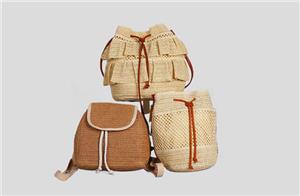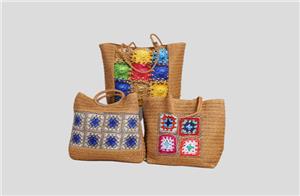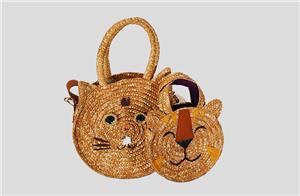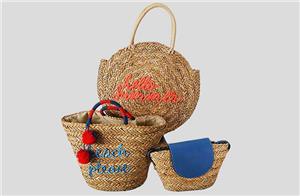The Eco-Friendly Revolution: Embracing Sustainable Yarn for Crochet
The Eco-Friendly Revolution: Embracing Sustainable Yarn for Crochet
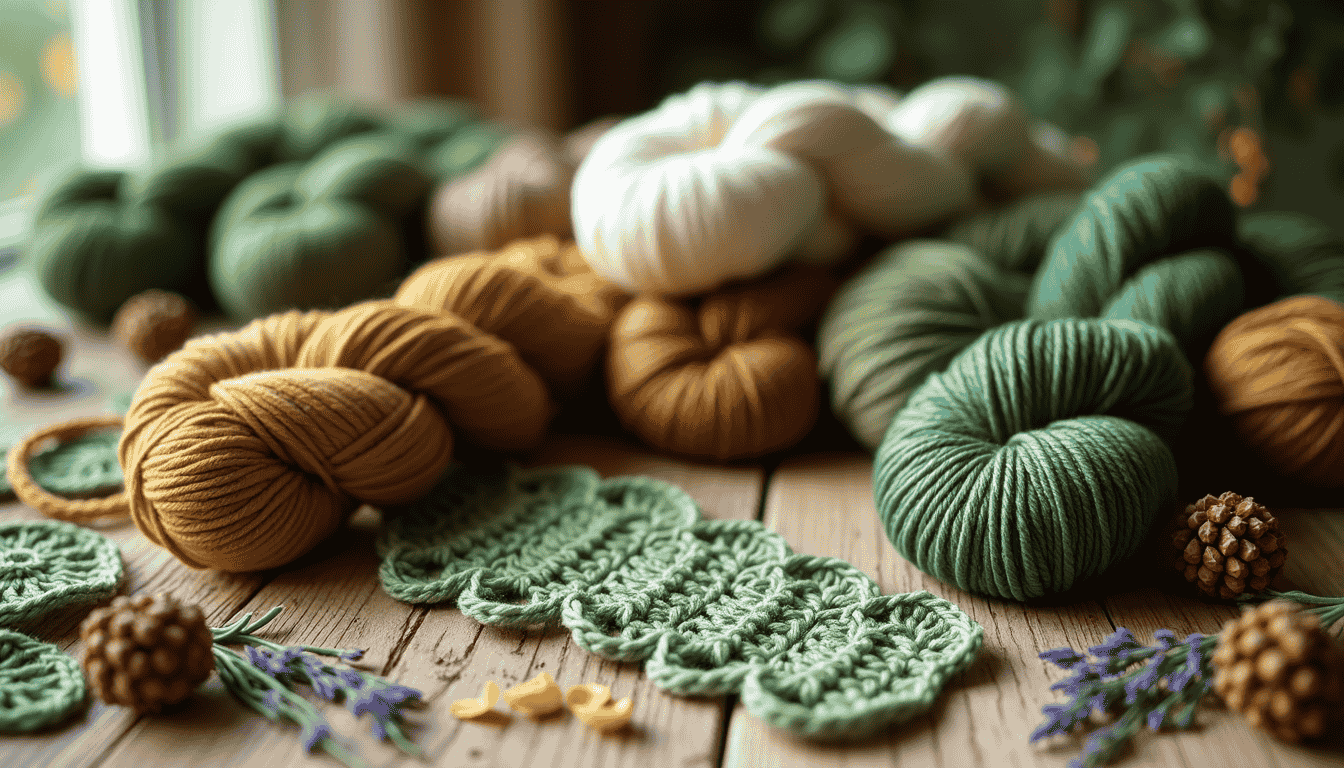
My crochet hook reminds me how much yarn a single project needs - sometimes hundreds of yards. We crafters make beautiful pieces, but our yarn choices might affect the environment more than we think.
The market for eco-friendly crochet yarn has grown by a lot. You can find everything from organic cotton to recycled materials. Many crocheters like me have started to learn about sustainable options that match our environmental values. But what makes yarn sustainable? How can we make better choices for our planet while still enjoying our favorite hobby?
Let's look at how traditional yarns affect our environment and find sustainable alternatives. You'll learn practical ways to make your crochet projects more earth-friendly. This piece will help both seasoned crocheters and beginners reduce their crafting footprint while creating beautiful, conscious pieces.
Understanding the Environmental Cost of Traditional Yarn
A quick look at our yarn stash rarely makes us think over the environmental cost behind each skein. Let me share some startling facts about traditional yarn production that changed my point of view about crafting choices.
Carbon footprint of synthetic yarn production
Synthetic yarns leave a massive environmental footprint. Each kilogram of polyester releases 14.2 kg of CO2 into our atmosphere. The numbers get worse with acrylic yarn, which produces 21.1 kg of CO2 per kilogram. The textile industry's appetite for oil tells an even bigger story - it uses 342 million barrels annually just to create acrylic fibers.
Microplastic pollution from acrylic yarns
This fact stopped me in my tracks: washing acrylic yarn projects releases about 730,000 microplastics into our water system. These synthetic fibers have become a major threat to our oceans. Studies show that microplastics make up up to 85% of man-made waste on shorelines worldwide. Synthetic textiles contribute 35% of all primary microplastics found in our oceans.
Chemical processing impacts on ecosystems
Synthetic yarn manufacturing involves heavy chemical processing that harms our environment through multiple channels:
Waterways get contaminated by toxic production chemicals
The process releases harmful greenhouse gasses like nitrogen oxide
These non-biodegradable fibers stay in our environment for up to 200 years
The situation becomes more alarming because synthetic yarns make up 60% of worldwide textile production. They need lots of energy to produce and release toxic fumes during manufacturing. Production chemicals like polyacrylonitrile and methyl acrylate damage soil quality, water systems, and pose risks to humans and animals alike.
These environmental costs opened my eyes and made me more mindful about my yarn choices. Now I explore more environmentally responsible alternatives for my crochet projects.
Navigating the World of Sustainable Yarn Options
My deep exploration into sustainable yarn options led me to find a world of certifications and standards. These help us make informed choices. Let me share what I learned about choosing earth-friendly materials for our crochet projects.
Plant-based yarn certifications explained
GOTS (Global Organic Textile Standard) certification stands out as a key marker for sustainable plant-based yarns. The certification comes in two levels: 'organic' needs 95% organic fibers, while 'made with organic materials' requires 70% organic fibers. GOTS goes beyond organic verification and makes sure every processing stage meets strict ecological and social criteria.
Animal fiber sustainability standards
The Responsible Animal Fibers (RAF) framework has changed how we source animal-based yarns. RAF includes three main standards: the Responsible Wool Standard (RWS), Responsible Mohair Standard (RMS), and Responsible Alpaca Standard (RAS). Your yarn from these certifications comes from farms that treat animals humanely and minimize environmental effects.
Key benefits of RAF certified yarns:
Guarantees ethical treatment of fiber-producing animals
Ensures environmental sustainability from farm to harvest
Provides complete traceability throughout production
Maintains strict compliance with animal welfare standards
Recycled yarn innovations
Recent developments in recycled yarns have caught my attention. The quality of yarns from recycled materials has improved remarkably. Recycled cotton yarn starts as textile waste or secondhand clothing. The material gets sorted by color and type before becoming new fiber.
Recycled polyester yarn makes up about 14% of global fiber production. Most of it comes from post-consumer PET bottles. This method reduces carbon footprint compared to conventional production and keeps plastic out of landfills.
Note: Bamboo yarn has become an excellent sustainable option. It needs minimal resources to grow and offers natural durability.
Making the Switch to Eco-Friendly Crochet
I took a look at my yarn collection and realized it was time to make some conscious changes in my crochet practice. Here's how I'm switching to more eco-friendly choices, and you can do it too.
Evaluating your current yarn stash
My yarn collection needed a closer look. A well-laid-out stash isn't just about keeping things tidy – it helps make mindful choices for future projects. You can take advantage of sales and cut down on unnecessary purchases with a carefully picked collection. Your stash needs sorting by fiber type with a simple inventory. This stops you from buying duplicates and pushes you to use what you have.
Sustainable yarn substitution guide
You don't need to start from scratch to switch to eco-friendly yarns. Successful yarn substitution boils down to matching three key elements: fiber content, yardage, and gage. The fiber characteristics should match as closely as possible when you swap traditional yarns with sustainable options. To name just one example, see organic or ethically sourced wool alternatives that keep similar properties when replacing wool yarn.
Budget-friendly transition strategies
Sustainable yarns can cost up to triple the price of synthetic alternatives - that's a real concern. But I've found several ways to make the switch more affordable:
Shop your stash first and organize existing materials
Check local fiber sourcing networks for better prices
Join yarn sharing and recycling initiatives
Buy sustainable yarns in bulk during sales to cut down on packaging waste
Note that consumption reduction is key to environmental effect. I'm taking small steps instead of replacing everything at once. Each new yarn purchase now ties to a specific project I'll use and love. This balanced approach helps me stay environmentally conscious while watching my budget.
The most sustainable choice is often using what we already have, so I use up my existing stash while adding more eco-friendly options gradually. This approach cuts waste and builds a more sustainable crochet practice for the future.
Building a Sustainable Crochet Community
My passion for building a green crochet community grew after I found how our crafting choices connect us all. My experience taught me that we can make better environmental choices by working together.
Local fiber sourcing networks
Supporting local yarn shops helps our community's economy and creates a hub for green crafting. These shops connect with regional producers directly to reduce transportation emissions and support ethical farming practices.
Yarn sharing and recycling initiatives
Yarn sharing programs have emerged as an exciting development. Around 95% of used textiles can be recycled or reused. Our local fiber arts community has created several groundbreaking solutions:
Yarn swap events for stash reduction
Community donation programs for unused materials
Shared projects using common resources
Workshops about green practices
Supporting ethical producers
The ethical yarn production world has grown substantially. Several certified producers now prioritize environmental and social responsibility. These companies are changing the industry through:
"Every skein of yarn can plant a tree" - this initiative by one ethical producer demonstrates how our craft can benefit the environment. These producers maintain clear sourcing practices and hold multiple certifications that focus on sustainability.
Small businesses respond to customer needs instead of following trends. This approach works especially when you have direct messaging and community involvement. These ethical producers build lasting customer relationships while staying true to green practices.
My work with ethical producers has shown that sustainable yarn isn't just about materials. We're building a community that values environmental care and artistic expression. Our connections with local fiber networks and ethical producers create a greener future for our cherished craft.
Conclusion
Eco-friendly choices in crochet might seem challenging at first, but our individual decisions create meaningful environmental effects together. My experience with eco-friendly yarn options has taught me that sustainable crochet extends beyond choosing organic or recycled materials. It's about developing mindful crafting habits that enhance our creativity and protect our planet.
Switching to sustainable yarn has changed my crochet approach completely. Instead of feeling restricted, I found that there was a rich world of options available, from GOTS-certified cotton to ethically sourced wool. These materials create beautiful projects and support communities dedicated to environmental stewardship. Sustainable yarns' quality and durability make them worthwhile investments for conscious crafters, despite their higher original cost.
Small, gradual changes help create lasting effects. You can start by organizing your current stash, connecting with local fiber networks, or choosing one sustainable yarn for your next project. Each step brings us closer to an environmentally responsible crafting future. Sustainable crochet isn't about perfection - it's about making better choices that match our values while creating pieces we love.
FAQs
1.What types of yarn are considered the most environmentally friendly?
Opting for yarns made from eco-friendly fibers such as organic cotton, bamboo, hemp, wool, or recycled materials can significantly lessen your environmental footprint, whether you're crafting personally or involved in a larger scale operation.
2.Are crochet yarns environmentally friendly?
Natural fibers are generally more sustainable than synthetic ones. Yarns crafted from materials like cotton, linen, bamboo, and hemp are excellent choices as they are renewable, biodegradable, and compostable.
3.Does Cascade Yarn practice mulesing-free production?
Cascade Yarns offers various wool options, including 100% Peruvian wool that is both non-superwashed and mulesing-free, making it a more ethical choice.
4.Which natural fiber is best for crocheting?
For crocheting, cotton and wool yarns are ideal for their lightweight and breathable qualities, linen offers a crisp and elegant look, and acrylic fibers are valued for their versatility and practicality. Each fiber brings unique characteristics to your projects.
5.How can I determine if the yarn I use is ethical and sustainable?
To assess the ethical and sustainability credentials of your yarn, start by examining the product tags for information on sourcing and sustainability standards. If this information isn't available, consider researching the brands online or contacting them directly to inquire about their practices. Brands like Patons Kroy Sock, Sandnes Garn, and Berocco may not always provide this information clearly, so direct inquiry can be more effective in ensuring you make responsible choices.

